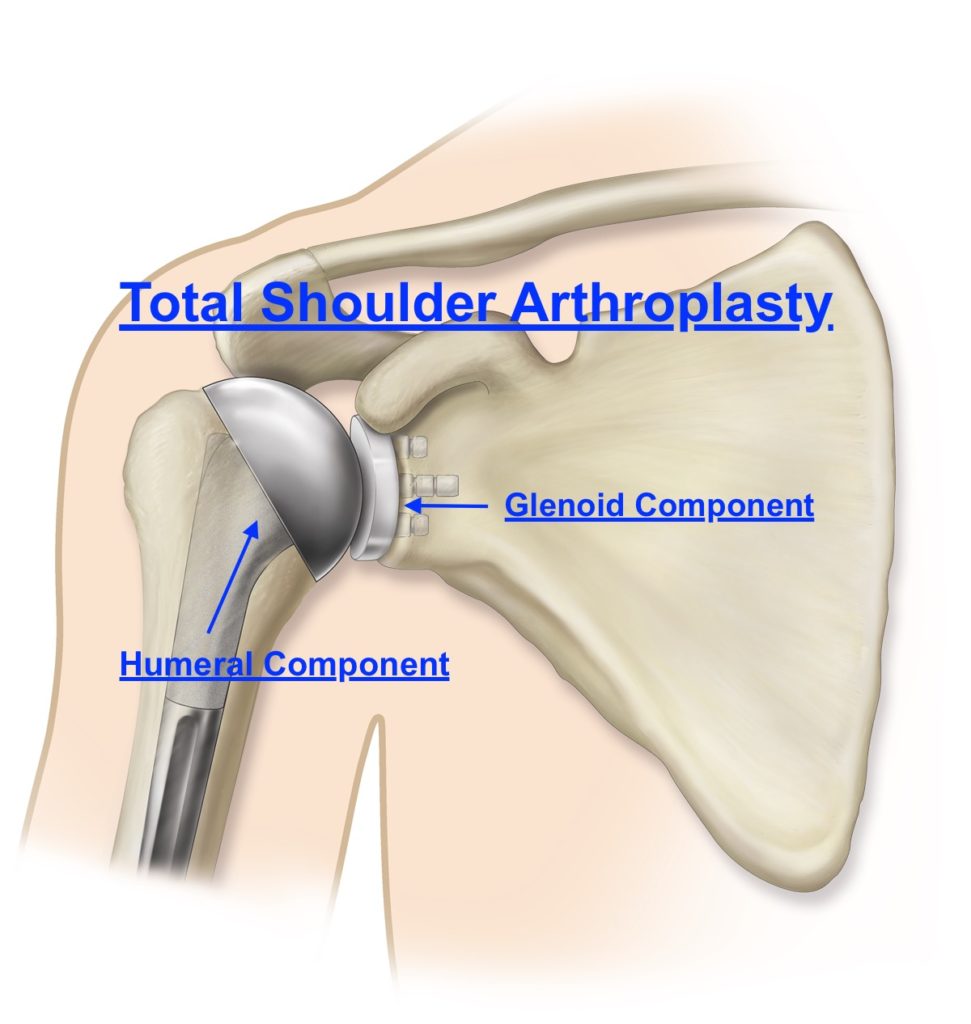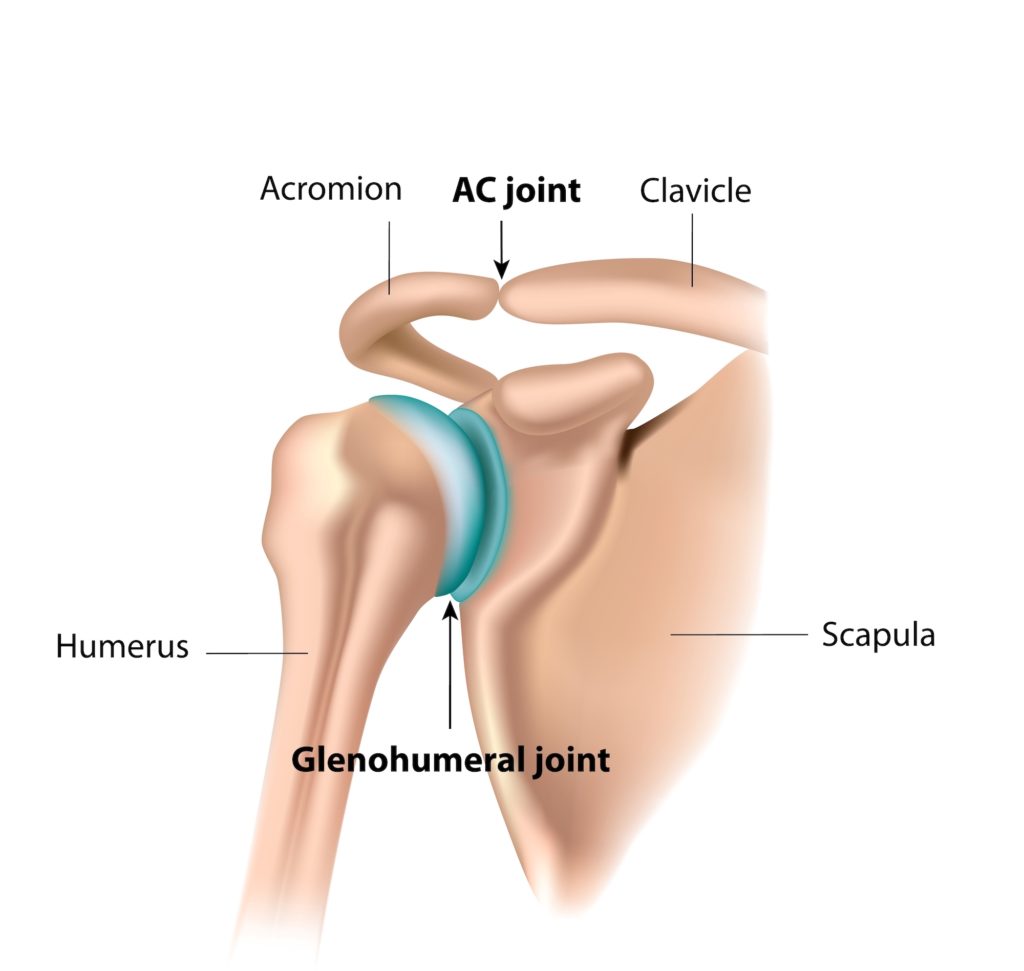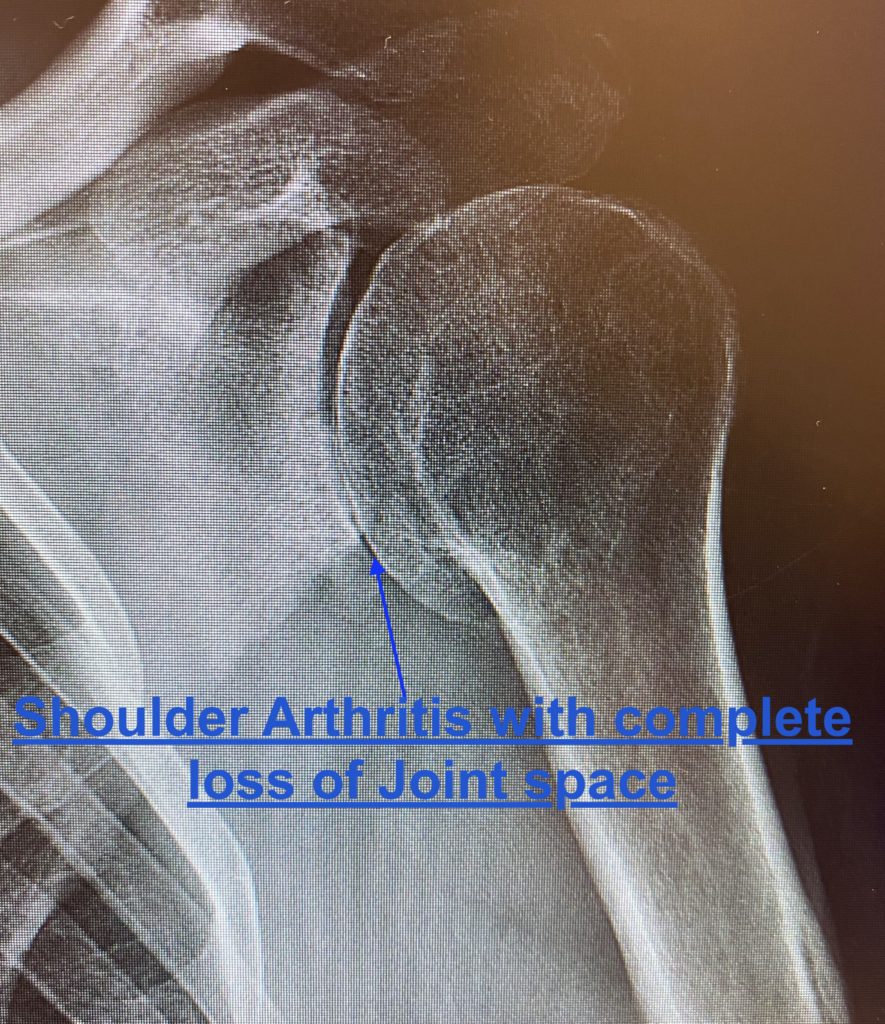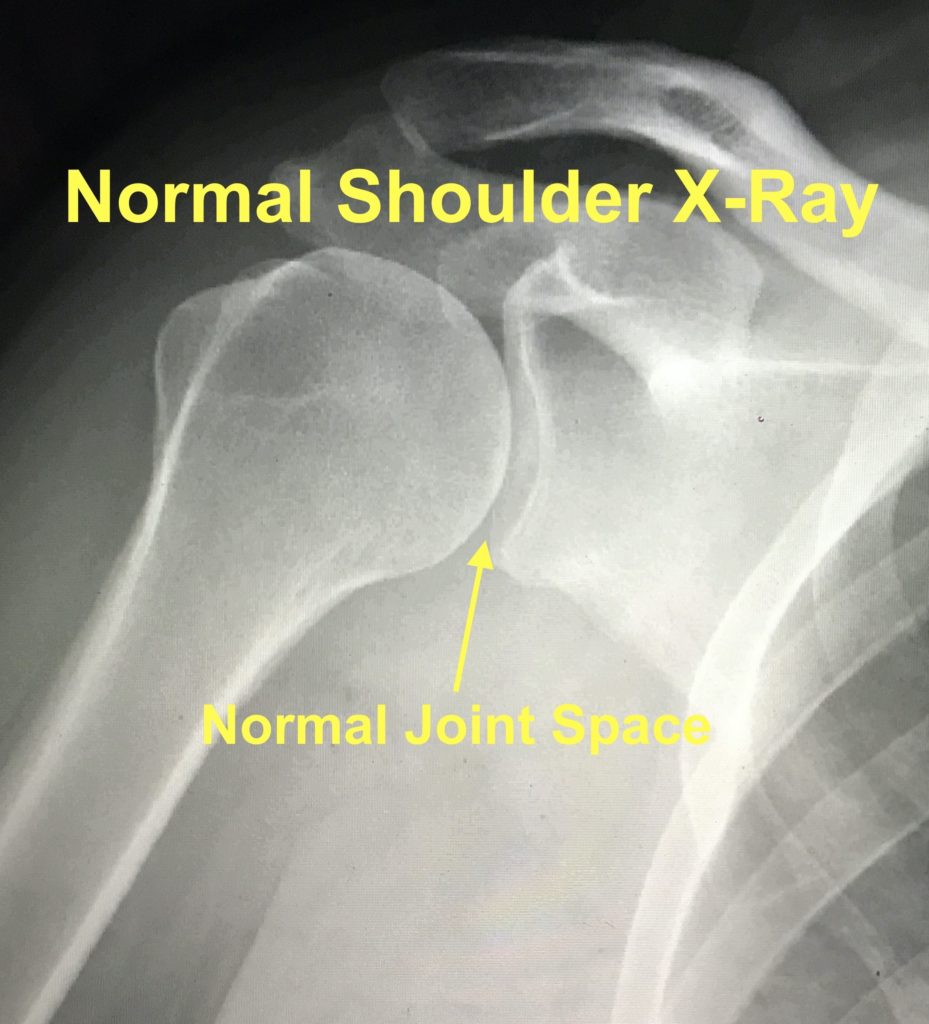Shoulder Replacement
Shoulder replacement is the third most common joint replacement surgery with about 53,000 procedures done in the U.S. every year.
As a leading shoulder doctor in Colorado Springs, I have the privilege of treating many shoulder patients, all of whom have many great questions.
Here are some of the most common questions I’m asked in my practice when it comes to shoulder surgery.
When To Have Shoulder Replacement Surgery?
The number one indication to actually go ahead with total shoulder replacement is pain, and usually it’s pain that’s affecting all aspects of life.
The biggest complaint I hear from people is it starting to keep them awake at night.
The other situation where it maybe should be done before it gets to that point is if people start having bone loss.
It’s really common in shoulder arthroplasty, where the socket side of the joint starts to wear down, and you start to lose bone, and it can make it more difficult to do the procedure if you wait too long,
What Does Shoulder Replacement Surgery Entail?
Shoulder replacement surgery is when you replace the joint surfaces on both sides of the joint.
So you replace the bad joint surface on the ball or the humeral head and on the socket over the glenoid.

How Long Does Shoulder Replacement Surgery Take?
Shoulder replacement surgery takes between an hour and a half and two hours, depending on the case.
Typically, patients that wait a long time and are very stiff, it does take a little longer to do those procedures just because it takes a little more time to get the proper exposure.
But generally speaking, it’s between an hour and a half and two hours.
How Long Is Recovery From Shoulder Replacement Surgery?
Full recovery after a total shoulder replacement takes about a year, but the vast majority of folks, by three months, feel like they’re markedly better than they were prior to surgery.
A very high percentage of patients that have the surgery have less pain with even a few weeks of having surgery than they had prior to surgery.
Here are a few post-op patient examples that may be helpful to see.
How Painful Is Total Shoulder Replacement Surgery?
Total shoulder surgery is different because a lot of the patients have learned to live with a pretty high level of pain.
But I would say that the vast majority of patients within a few days tell me they have less pain after surgery than they had before.
Can I Lift Weights After Shoulder Replacement Surgery?
We do place some restrictions on patients on what they can lift after surgery, but I’d still encourage folks to work out and lift weights with very specific restrictions.
For example, we want to avoid the bench press, but I allow patients to do pushups. They can do dumbbell press, but we typically want to restrict the weight on that arm to 25 to 35 pounds.
Anatomy

The shoulder joint is considered a ball and socket joint, but unlike the hip, the ball is substantially larger than the socket which offers no inherent stability.
An analogy that I often use to describe the shoulder joint is “it is like a golf ball on a golf tee”.
Because there is not bony stability, the shoulder relies on a complex arrangement of ligaments which individually tighten at specific limits to maintain the humeral head on the glenoid (socket).
Additionally, the rotator cuff musculature offers dynamic stability by synchronously firing opposing muscles to center the ball in the socket.
This complex design allows for an amazing joint with range of motion that is beyond any other joint.
This design also makes for a tremendous challenge when trying to reconstruct or replace, as the components are subjected to an enormous amount of compressive and shear forces. It also subjects the shoulder joint to injuries such as dislocation or tears more often than other joints.
Interestingly, symptomatic arthritis requiring replacement is not as common in the shoulder as it is in the hip or knee.
Osteoarthritis
Osteoarthritis is a degenerative condition that can affect any joint in our body that has cartilage. Cartilage undergoes changes as we age that can affect its mechanical properties.
As we age our cartilage changes to have a higher concentration of water and lower concentration of collagen ( substance). This results in softening of the cartilage and makes it more prone to damage.
As damage occurs, the cartilage can crack or flake off of the bone that it is meant to protect. This can progress to the point that there is exposed bone on the joint surfaces (bone on bone), and can be seen on a X-ray as a loss of “space” between the humeral head and glenoid.
As the cartilage continues to deteriorate the joint will become increasingly stiff, inflamed and painful.
If conservative measures such as physical therapy, anti-inflammatory medication and activity modifications fail to provide enough relief, total shoulder replacement is the procedure of choice.
One prominent symptom that drives patients to act is night pain that interferes with sleep.
Night pain is incredibly common for shoulder arthritis.
Inflammatory Arthritis
Other conditions that can result in cartilage destruction include inflammatory arthritis such as rheumatoid arthritis.
In this condition, uncontrolled inflammation destroys the cartilage and results in bone on bone in the shoulder joint. Unlike degenerative arthritis, inflammatory arthritis affected shoulders do not develop the bone spurs that we see in degenerative arthritis.
When conservative measures fail to provide adequate relief of shoulder pain, total shoulder replacement is performed with great success in terms of relief of pain and improvement in function.
Avascular Necrosis
Avascular necrosis is a disease in which there is a temporary or permanent loss of blood supply to the bone.
A number of conditions, including long- term use of steroids or alcohol, a traumatic injury, rheumatoid arthritis or unhealed fractures can cause the blood supply to the bone to be cut off.
As the bone dies, it collapses and results in a joint that is not congrous.
Although avascular necrosis can happen in any bone, it usually affects the ends of long bones such as the humerus. When this happens, the shoulder becomes painful and movement becomes limited.
Proximal Humerus Fractures
The upper arm can fracture for a variety of reasons. Proximal humerus fractures are typically caused by trauma-related injuries such as a fall, but become more common in persons around the average age of 60 as they become more prone to osteoporosis.
The proximal humerus includes four parts: the articulating surface, the greater and lesser tuberosity, and the humeral shaft.
When complex proximal humerus fractures occur, they tend to break off into three or four parts in consistent patterns around the ball-and-socket joint.
Fractures are the most severe injuries to the upper humerus and can be difficult to treat.
These fractures can often be treated without surgery, but severe fractures often require surgery to repair with plates and screws. However, the proximal humerus is often compared to Humpty Dumpty because the bone is very soft with a very thin shell. This can make it very difficult if not impossible to repair. In these circumstances, patients are better treated with a total shoulder replacement, and most often a Reverse Total Shoulder (see below).
I’ve posted more information on total shoulder surgery, and have a patient download available.
If you have any questions, please feel free to contact me via email or call my office to schedule a consultation.


